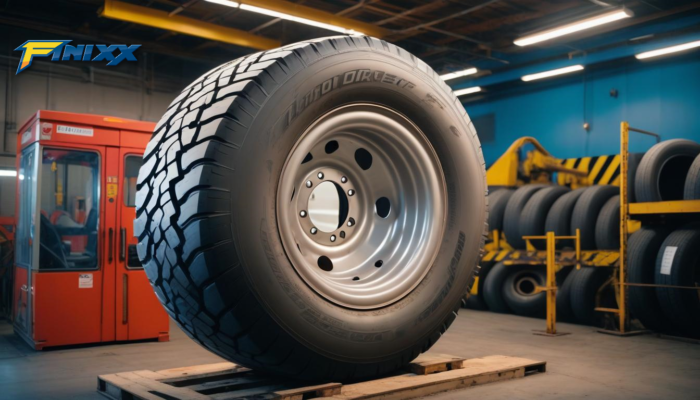“Explore the Detailed Construction, Types, and Applications of OTR and TBR Truck Tires to Enhance Performance and Longevity.”
1. Definition and Types
OTR (Off-The-Road) Tires:
- Purpose: Designed for vehicles used in mining, construction, and other off-road applications.
- Types:
- Earthmover Tires: Used for heavy-duty equipment like loaders and bulldozers.
- Loader Tires: Specially built for high load-bearing capacity.
- Grader Tires: Designed for graders that maintain roadways.
- Transport Tires: Used in industrial transport vehicles operating in harsh terrains.
TBR (Truck and Bus Radial) Tires:
- Purpose: Used on commercial trucks, buses, and long-haul transportation vehicles.
- Types:
- Steer Tires: Positioned on the front axle, responsible for steering.
- Drive Tires: Located on the rear axles, providing traction.
- Trailer Tires: Designed for trailer axles, focusing on load capacity and durability.
- All-Position Tires: Suitable for multiple positions on a vehicle, offering versatility.
2. Construction and Technology
- OTR Tires:
- Tread Design: Deeper treads with large blocks for maximum traction in uneven terrains.
- Sidewall Strength: Reinforced to resist cuts, punctures, and abrasions.
- Compounds: Special rubber compounds to withstand extreme conditions and loads.
- Heat Resistance: Built to dissipate heat generated by heavy loads.
- TBR Tires:
- Radial Construction: Layers of steel cords placed at 90 degrees to the direction of travel, providing strength and flexibility.
- Tread Patterns: Optimized for different weather conditions and road types.
- Fuel Efficiency: Designs focus on reducing rolling resistance to enhance fuel efficiency.
- Durability: Engineered for longer life cycles, with features like stone ejectors and shoulder protection.
3. Applications
- OTR Tires:
- Mining: Heavy machinery used in mines for excavation, transportation, and processing.
- Construction: Equipment like cranes, loaders, and graders in construction projects.
- Agriculture: Large tractors and harvesters operating in fields.
- TBR Tires:
- Long-Haul Transportation: Trucks and buses traveling long distances on highways.
- Urban Transportation: Buses and delivery trucks in cities.
- Logistics: Vehicles involved in the transport of goods across regions.
4. Market Dynamics
- Global Demand:
- OTR Tires: Driven by growth in the construction, mining, and agriculture sectors.
- TBR Tires: Influenced by the expansion of transportation and logistics industries, particularly in emerging markets.
- Key Markets:
- OTR Tires: North America, Asia-Pacific, and Africa are significant regions.
- TBR Tires: North America, Europe, and Asia-Pacific dominate due to extensive transport networks.
- Technological Innovations:
- OTR Tires: Advancements in tire compounds and construction methods to enhance performance and reduce downtime.
- TBR Tires: Focus on sustainability, with low-rolling-resistance designs and retreading capabilities.
5. Challenges and Considerations
- OTR Tires:
- Maintenance: Requires regular inspection for wear, cuts, and alignment issues.
- Cost: High initial investment due to the tire’s robustness and specialized nature.
- TBR Tires:
- Wear and Tear: Subject to high levels of wear, especially on drive and trailer axles.
- Regulations: Compliance with regional regulations on tire safety and performance.
6. Choosing the Right Tire
- OTR Tires:
- Terrain and Application: Selection should be based on specific terrain and equipment usage.
- Load Capacity: Consider the maximum load the tire will need to support.
- TBR Tires:
- Vehicle Position: Choose tires based on whether they will be used on steer, drive, or trailer axles.
- Road Conditions: Select tread patterns and compounds suited to the primary operating environment (e.g., wet roads, highways, urban settings).
7. Sustainability and Retreading
- OTR Tires:
- Retreading: Some OTR tires can be retreaded to extend their life, though it’s less common due to the demanding conditions they face.
- Recycling: OTR tires are increasingly being recycled into rubberized asphalt or other materials.
- TBR Tires:
- Retreading: Widely practiced, allowing multiple life cycles from a single tire casing, reducing costs and environmental impact.
- Eco-friendly Designs: Many TBR tires are now designed with reduced rolling resistance and lower emissions in mind.

